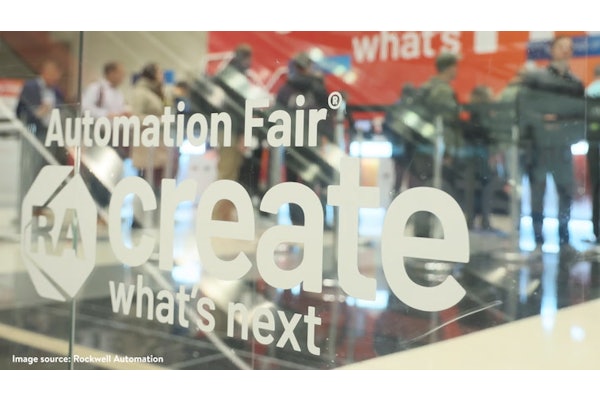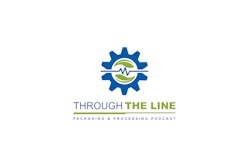
In recent years, much of the content at ARC Advisory Group’s annual Industry Forum in Orlando, Fla., has revolved around IT/OT convergence and the digital transformation of industry, infrastructure and cities.
As we’ve learned, digital transformation can be a challenging—if necessary—journey. At each year’s forum, we learn more about how pioneering companies are overcoming these challenges and the associated operational and business benefits. This year, one of the key takeaways was that culture, rather than technology, is often the major barrier on the journey to digital transformation. Other discussion threads centered around cybersecurity and data ownership. (For those of you who could not attend, videos of most ARC Industry Forum sessions are available on ARC’s YouTube channel.)
In his general session presentation, Mike Guilfoyle, research director at ARC Advisory Group, provided some perspectives on planning for digital transformation based on ARC’s research, consulting and collaboration activities in this area. “You can’t do anything digital without cybersecurity,” he emphasized, calling attention to sessions focused on cybersecurity, as well as digital transformation—including the Internet of Things (IoT), machine learning, virtual and augmented reality, digital twins, and more. He encouraged end users to participate in future meetings of the Digital Transformation Council.
The imperative
“Whether it’s disruptive technology, ongoing market innovation, multi-billion-dollar governmental pushes or some combination of all three, all industries and populations are feeling pressure to transform,” Guilfoyle explained. This makes it clear that every industrial- and infrastructure-related organization and municipality needs to understand how to embrace and execute digital transformation.
What makes careful planning so critical is that organizations expect to reap massive, game-changing benefits from digital transformation. Yet, as Guilfoyle explained, many continue to be confounded when it comes to ROI and scale. Statistics indicate that more than 80 percent of industrial companies are now undertaking digital transformation initiatives, but fewer than 11 percent are seeing sustainable success. “Many industrial users suffer from ‘pilot paralysis.’ Others are unable to scale up to maximize the benefits,” he explained. “I don’t need machine learning to know that something is wrong with this picture.”
Common missteps—all related—include: numerous possibilities without direction, pursuit of technology, and managing cultural impediments.
Digital transformation offers a plethora of possibilities, but much less direction. This leads to the pursuit of technology for technology’s sake. “The cultural barriers, the elephant in the room, underpin all others,” Guilfoyle said. “No one wants to take on the cultural barriers to change.”
Possibilities without direction. Digital transformation presents both challenges and opportunities. “Some are understood but still difficult. Many simply can’t be foreseen, yet the organization must be prepared to deal with them,” Guilfoyle said. “When examining all these possibilities, it becomes exceedingly difficult to answer the simple questions: What needs to be done? Why? And when?”
Pursuit of technology. Without a good compass to provide direction, many companies just see digital transformation as the pursuit of technology. “That’s a pretty natural progression. However, it just adds to the problem,” Guilfoyle said. “Given all the technologies and marketing behind them, it’s very difficult to understand differences in solutions so that vendors can be compared in a meaningful way.”
Managing cultural impediments. “When they are able to get off the hamster wheel of technology, there is often a eureka moment that concentrating on the business needs will solve the problem,” Guilfoyle commented. There’s a problem with that, however. “What typically happens is that everyone starts out excited and focused, but then they encounter or foresee organizational impediments. Rather than deal with these, they simply avoid them, thus constructing limits on innovation.”
This often results in incremental, rather than transformational change. “The business need is important, but don’t focus on it too early in the process,” Guilfoyle said.
“Digital transformation initiatives must find a way to create connective tissue between strategic objectives and the specifics of each project executed,” he added. “This enables organizational adherence to a cohesive business strategy at all levels and throughout the entire transformation process.” This ensures that:
- Priorities can be established.
- Decisions have rationale and the people that make them have the authority to carry them out.
- Management is fully informed by operational realities for buy-in, scale and long-term success.
This connective tissue between strategy and how projects are executed also accounts for people, the role they need to fill, and how they derive purpose and value as change occurs.
ARC’s three-step planning process
To ensure this alignment, ARC recommends a three-step process for our clients that are planning digital transformations:
- Assess your organizational maturity and capacity for change.
- Determine where to start applying technologies. This provides a meaningful way to develop a framework to consider the role of technology and pilots in terms of how to select, deploy and scale them within a strategic framework.
- Determine how to execute based on your current readiness to align the framework to tactics.
Many organizations would prefer to skip step one because that’s where all the cultural barriers exist, Guilfoyle said. But that would be a huge mistake.
>>Paul Miller, [email protected], editorial and content director at ARC Advisory Group, has been studying and writing about the industrial automation industry for 30 years.


















